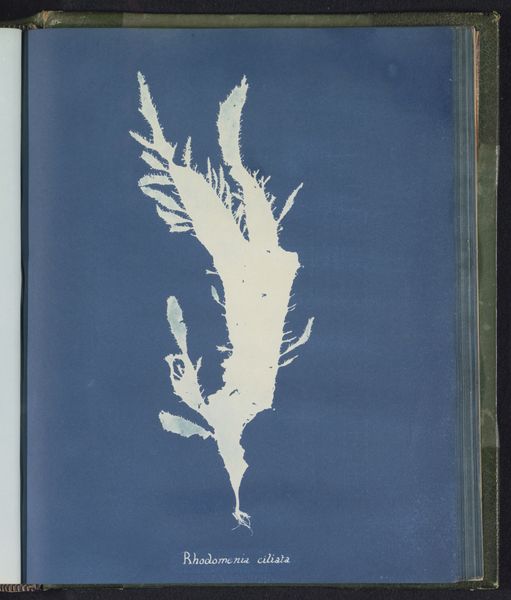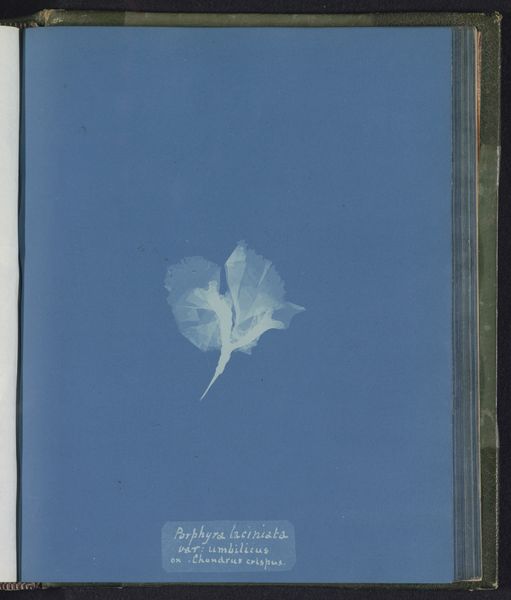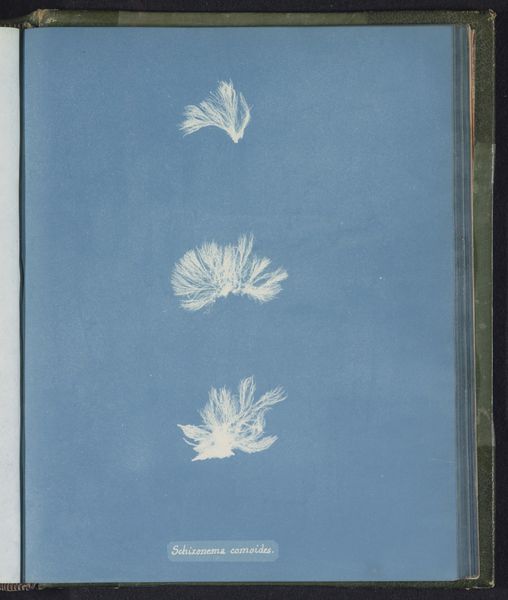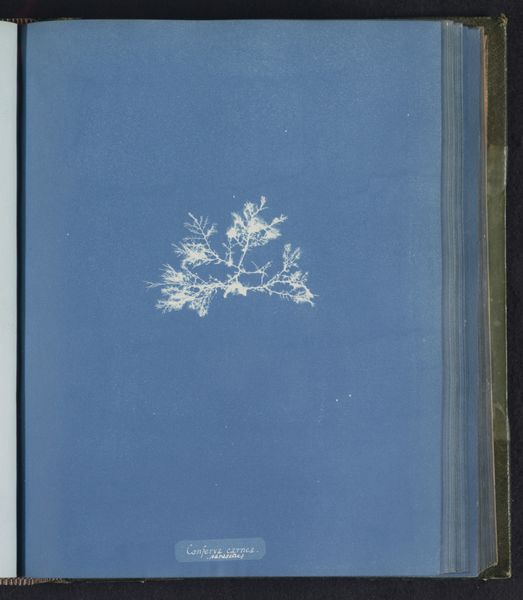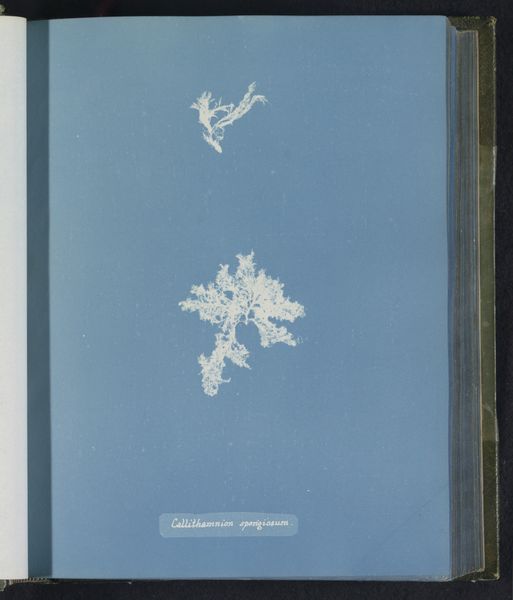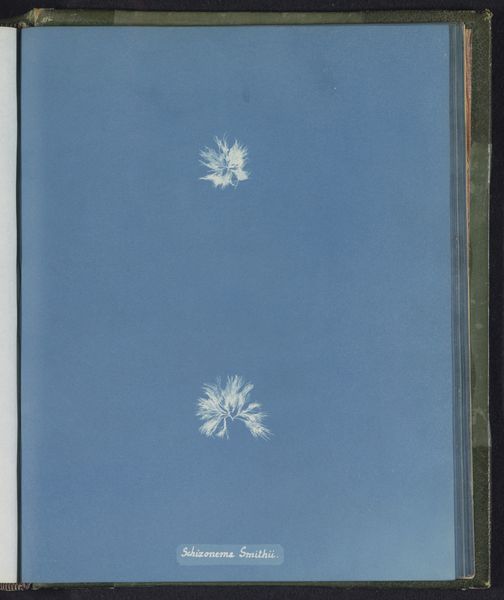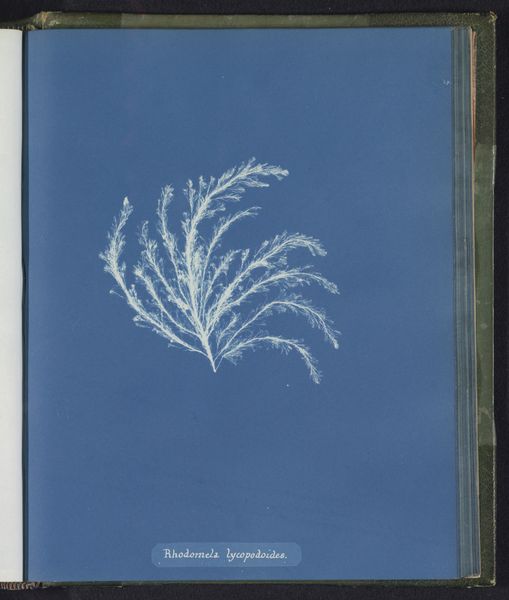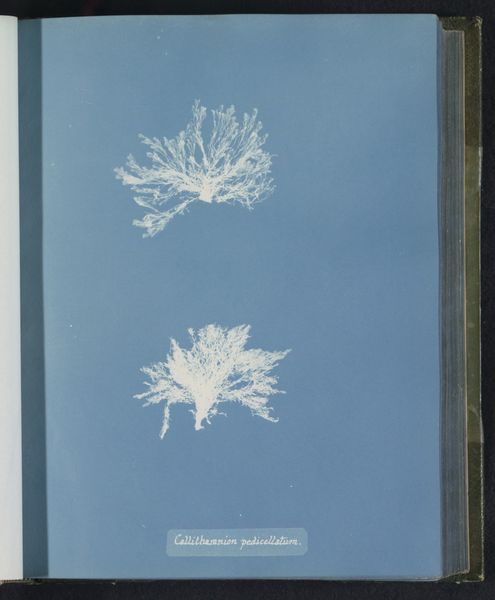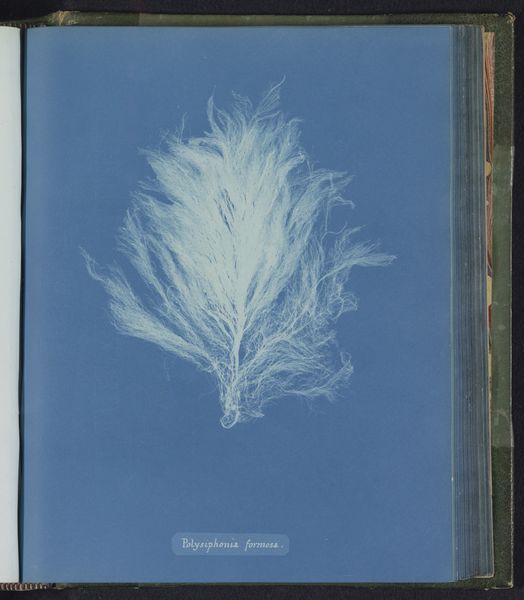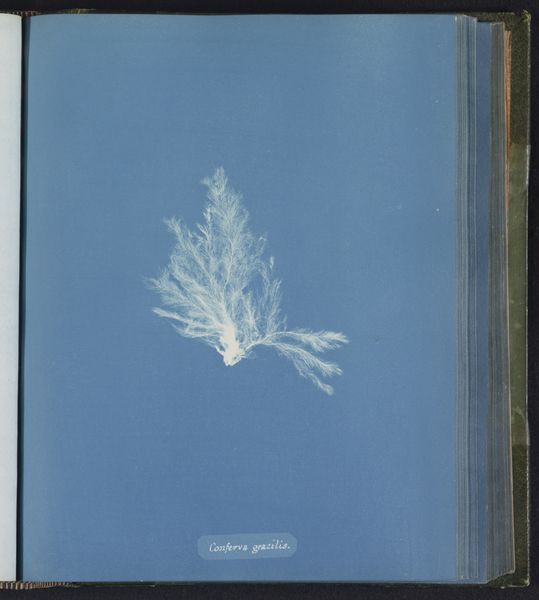
print, cyanotype, photography
#
still-life-photography
# print
#
cyanotype
#
photography
#
coloured pencil
#
romanticism
#
naturalism
Dimensions: height 250 mm, width 200 mm
Copyright: Rijks Museum: Open Domain
Curator: Let’s discuss Anna Atkins’ cyanotype, "Schizonema parasiticum," created between 1843 and 1853. It’s a striking piece in photographic history. Editor: It is. My immediate reaction is one of cool detachment. The stark white against the cyan evokes a scientific illustration, precise yet ethereal. There is something cold about it. Curator: Exactly. The process itself—cyanotype—allowed Atkins, a female botanist, to meticulously document algae specimens. We can see this work, and indeed much of her output, as claiming space within the male-dominated scientific discourse of the Victorian era. Through photography, she constructed a narrative where scientific observation became an act of self-empowerment. Editor: I agree with the historical and socio-political framing. Looking purely at the composition, there is something that is quite elegant: the form of the algae against the monochrome backdrop, an exploration in light and shadow, and her reduction of the subject to its fundamental form, highlighting its delicate structure. Curator: And this choice of subject matter—Schizonema parasiticum—speaks volumes. A parasitic alga. One could read its presence here as a commentary on the parasitic nature of the scientific establishment itself, thriving at the expense of women's contributions. Editor: It’s hard to see that encoded meaning explicitly within this specimen. Isn't it just algae? Is this anachronistic reaching or truly a window into the intent of Anna? What does this image, as a visual phenomenon, do that's uniquely different from text? That's not obvious to me. Curator: We must acknowledge the limitations of accessing the complete intent. The brilliance lies in interpreting its existence, its deliberate placement within the photographic space she created, the claim for space within both artistic and scientific domains, that becomes its feminist statement. Editor: Perhaps. For me, the photograph remains a testament to form. Curator: It’s both. It transcends the binary. Thank you. Editor: Indeed. The dialogue, at least, enriches the perception of it, however contested it might remain.
Comments
No comments
Be the first to comment and join the conversation on the ultimate creative platform.


